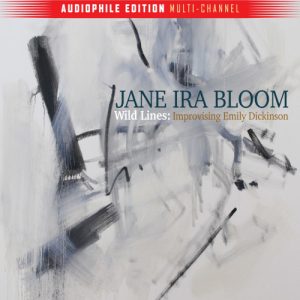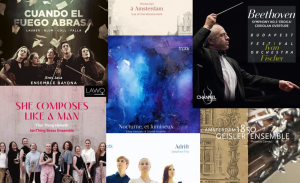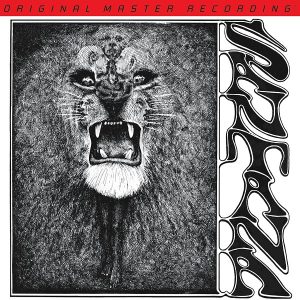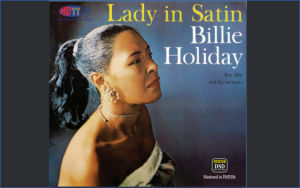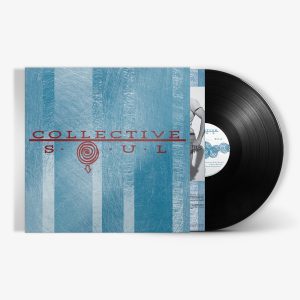Jane Ira Bloom: Wild Lines - Improvising on Emily Dickinson. Anderson Audio (2017, Audiophile Edition 2020 (DXD) HERE
Jane Ira Bloom is an acknowledged jazz master on the soprano saxophone. She has built a following bridging modern and experimental jazz. In Wild Lines she has created a fresh and unpretentious exploration of the intersection of music and spoken text, taking inspiration from fragments of Emily Dickinson's poetry. Bloom says, "I didn't always understand her, but I always felt Emily's use of words mirrored the way a jazz musician uses notes."
Bloom soars in this music. Her music on this album is inventive, flowing, and constantly seeking new avenues for expression. In this, she is well supported by her partners, Dawn Clement on piano, Mark Helias on bass, Bobby Previte on drums, and the speaking voice of Deborah Rush.
The first half of the album is instrumental only. The second half of the album repeats these works, but now with the voice of Deborah Rush speaking the poetry fragments that inspired Bloom. The works with spoken voice are somewhat differently constructed than the instrumental only pieces. The spoken text has now taken the role of the soprano sax in the first instrumental-only rendering of the piece. This makes for a fascinating series of contrasts. And, I've enjoying sequencing my playlist to hear one and then the alternative.
Take the opening track, "Emily & Her Atoms," as an example. In this instrumental-only rendition, Bloom initiates with saxophone in an iterative, recycling motif, building an evolving interweaving line, Previte accents on percussion, then Clement enters on piano repeating and supplementing the iterative motif Bloom built initially. When Bloom re-enters, she is ever-moving, something of a trademark to her performances, and the voice of her saxophone is captured from one channel across to the other, moving left to right and right to left. On headphones, this is engaging if unexpected. I'd love to hear the multi-channel version in a good multi-channel system.
Moving to the same music, "Emily & Her Atoms," now with the spoken text of the Emily Dickinson poetry fragment (track 17 in my download file), the voice leads with Clement supplementing on piano. As the spoken text completes, Bloom enters once again with that iterative, recycling motif and the work completes similarly to track 1 but with some variation. This is improvisation, but with a plan, right?
I found this foray into the intersection of music and spoken text fascinatingly well done. Better, to my sensibilities, than many other efforts I've heard. Too often, the performers will present a bit of music, come to a complete halt and present spoken text, come to a complete halt once again for a music segment. Here, there is a seamlessness to the interweaving of spoken word and music. For me, this simply works—and quite marvelously.
And here I should mention what a remarkable contribution Deborah Rush makes with her voice role. Her delivery and inflection is perfect in these works, creating great content and meaning. This is not simply a reading, it is a rendering. It is the skill of a very good actor adding depth and character to the text being spoken, as is so highly appropriate to the works of Emily Dickinson. Brava!
As previously mentioned, I've greatly enjoyed Bloom's contrasting of the instrumental-only renditions with the with-spoken-word renditions. She shares how she has experienced the poetry and interpreted it to her music:
"I didn't always understand her but I always felt Emily's use of words mirrored the way a jazz musician uses notes...I'm a saxophone player and I approach playing the horn like a singer. For example, there's something that I've learned from the old-school players and that is when I play a ballad I want you to feel that I'm singing the lyrics into the horn. I want there to be this extra feeling with what each song means. And that's the most important thing: what the song means. Even though I'm not saying the words, inside I am."
In closing I will say that the sound quality on this album is superb—very clean and with excellent resolution and reproduction of the timbre of the instruments. Jim Anderson has done a masterful job capturing the instruments and voice with lifelike character and detail. It is one of those recordings where one can simply luxuriate in the sound all for the sake of the sonics. But here we get the triple luxury of compelling music, excellent performances and great sonics.
I love it! I think you may, too.
Some background on this release… This album was originally issued by Outline as a two-disc stereo CD in 2017, but it was conceived by Bloom and recording engineer Jim Anderson of Anderson Audio New York as a multi-channel recording at the time. So the recording was laid down with this future possibility in mind. This "Audiophile Edition" released in August 2020 is the realization of that original concept.
The audio production team of Jim Anderson & Ulrike Schwarz mixed the surround sound project at Skywalker Studios and mastering engineer Bob Ludwig of Gateway Mastering put on the finishing touches to create the final edit master. DSD stereo and multi-channel mastering was performed by Tom Caulfield mastering engineer at NativeDSD. (See the interview with Tom, HERE.)
Jane Ira Bloom has written about her experience with recording in surround sound:
"The soprano, which is my instrument, is not like the alto or the tenor saxophone which has a bell at the end of the horn and the sound projects out like a trumpet. On the soprano saxophone, the sound comes out in all different directions. So, when I was talking with my long-time engineer and good friend, Jim Anderson, about recording, he suggested "how about surround sound?" So, as we capture the soprano's sound from 360 degrees, this is a special way to hear it. This is the way the instrument breaths, so in that sense, surround sound is a perfect match for my instrument. For somebody like me who's always been interested in how sound changes when it moves (I do this thing with the saxophone where I swing the bell of the horn around 180 degrees) what could be a more perfect way to capture that sound then with a listening experience that covers 360 degrees?
"When I heard the first playback in surround I said to Jim, 'my God, this is like sonic heroin. I've never heard sound come back at me that comes this close to what it feels like to be inside the band. This is what it sounds like!' This is what I got excited about!" [More]
Note: My audio system is stereo only, so I don't have a way to listen to the multi-channel version. If you have a multi-channel system, I'd love to see your thoughts about it in the comments below.




